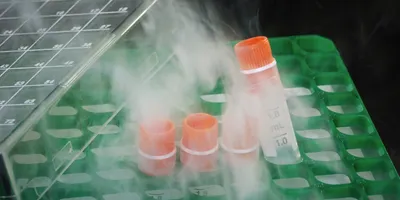BLOOMINGTON, Ind. -- Chemicals used as flame retardants are present as environmental pollutants at locations around the globe, including remote sites in Indonesia, Nepal and Tasmania, according to a study by researchers from the Indiana University School of Public and Environmental Affairs.
The study, published this month in the journal Environmental Science and Technology, makes use of a novel but highly effective sampling technique: measuring concentrations of the chemicals in the bark of trees, which absorbs compounds in both vapor and particle phases.
"These findings illustrate further that flame retardants are ubiquitous pollutants and are found all around the world, not only in biota and humans but also in plants," said Amina Salamova, a research associate in the School of Public and Environmental Affairs at IU Bloomington and co-author of the study with Ronald A. Hites, Distinguished Professor in SPEA and in the Department of Chemistry in the College of Arts and Sciences.
The study measured concentrations of brominated and chlorinated flame retardants collected in tree bark samples at 12 locations around the globe: three sites in Canada and single sites in Iceland, Ireland, Norway, Czech Republic, South Africa, Nepal, Indonesia, Tasmania and American Samoa.
The highest concentrations were found at an urban site: Downsview, Ontario, Canada, near Toronto. However, the second-highest concentration of one type of flame retardant, Dechlorane Plus, was found at a remote site at Bukit Kototabang in Indonesia. Researchers don't know the cause of the relatively high concentrations at the site but suspect it may be near a source.
The study was carried out in cooperation with the Global Atmospheric Passive Sampling network, an international monitoring initiative established in 2004 on six continents.
Brominated and chlorinated flame retardants have been used for several decades in consumer products made of plastic, foam, wood and textiles to prevent combustion and slow the spread of fire. They persist in the environment and bio-accumulate in ecosystems and in human tissues. Exposure to the compounds has been associated with thyroid and other endocrine system disruption and with adverse neurological development. As a result, the production and use of certain flame retardants has been restricted in North America and the European Union.
Researchers measured a variety of flame retardants, including widely used polybrominated diphenyl ethers, or PBDE, as well as nonregulated compounds such as Dechlorane Plus and "older" flame retardants that were used in the 1980s. Findings included:
- Most of the compounds were detected at all the locations, with concentrations varying widely.
- Concentrations were associated with population density, suggesting the compounds most likely entered the environment through their use in nearby homes and offices.
- Concentrations found in tree bark are correlated with those measured in previous atmospheric sampling at the sites by the Global Atmospheric Passive Sampling network.
Higher concentrations of flame retardants in bark and the atmosphere have been found by Hites and others in previous studies of the Great Lakes region, especially urban areas near Chicago and Cleveland, and also at cities in China. Even higher concentrations were found in southern Arkansas and at Niagara Falls, N.Y., near the sites of manufacturing facilities for PBDE and Dechlorane Plus, respectively.
The study also confirms the effectiveness of using tree bark as a sampling medium, a technique that Hites and colleagues have used in previous studies of persistent organic pollutants such as flame retardants.
Bark makes an effective sampling medium because of its large surface area and high lipid content. The samples are easy and inexpensive to collect, an advantage in developing countries that lack funding for extensive environmental monitoring programs. Tree bark also collects both vapor and particle phase pollutants, while other samplers collect one or the other.
Support for the study came from the Great Lakes National Program Office of the U.S. Environmental Protection Agency. The article is available online.
BLOOMINGTON, Ind. -- Chemicals used as flame retardants are present as environmental pollutants at locations around the globe, including remote sites in Indonesia, Nepal and Tasmania, according to a study by researchers from the Indiana University School of Public and Environmental Affairs.
The study, published this month in the journal Environmental Science and Technology, makes use of a novel but highly effective sampling technique: measuring concentrations of the chemicals in the bark of trees, which absorbs compounds in both vapor and particle phases.
To continue reading this article, sign up for FREE to

Membership is FREE and provides you with instant access to eNewsletters, digital publications, article archives, and more.










